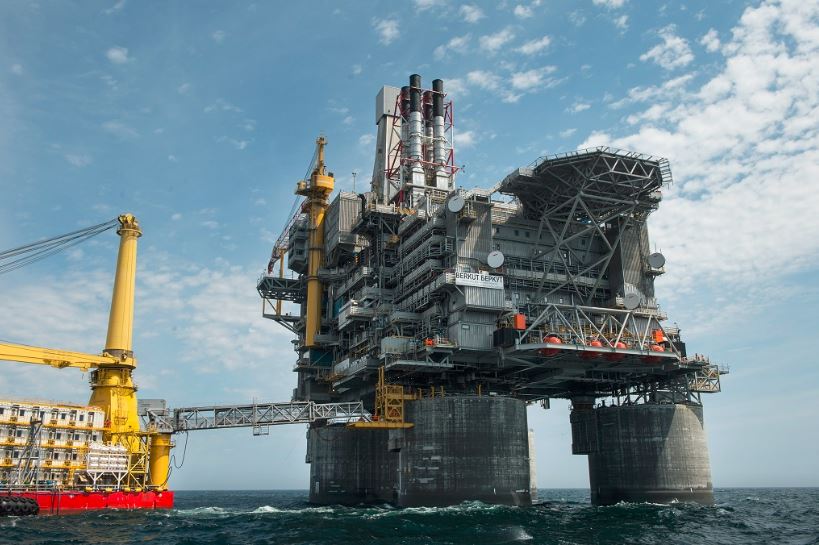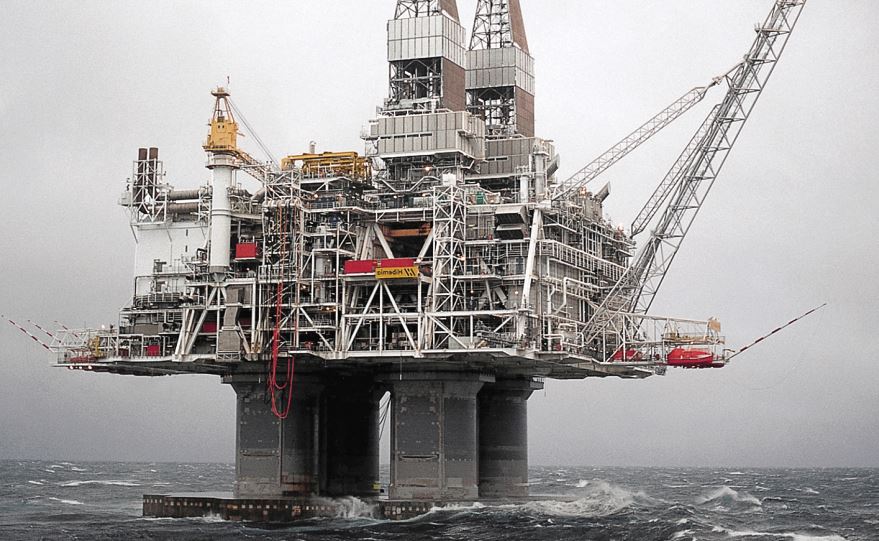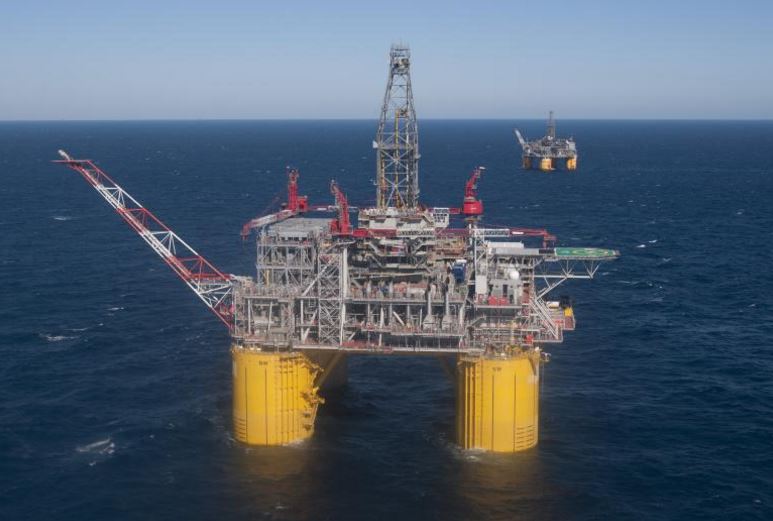Offshore structures (rig and production platform) are complex facilities to drill wells (options) and produce gas from wells from offshore locations. This is one of the most fascinating structures in the world and this article will show 5 largest offshore structures on the planet.
1. Berkut Platform

Berkut Platform (Courtesy of Rosneft)
Berkut is the world’s biggest oil platform which has begun commercial production at the Sakhalin-1 offshore project in Russia’s Far East. The Berkut oil rig is expected to extract 4.5 million tons of oil annually. The Sakhalin-1 Consortium was formed in 1996 is the first major shelf project in Russia created under terms of a Product Sharing Agreement (PSA). The international consortium is made up of the US major ExxonMobil (30 percent), Japan’s Sodeco (30 percent), Russia’s Rosneft (20 percent) and India’s ONGC Videsh (20 percent). The Berkut platform is expected to produce 12,000 tons of oil daily or about 4.5 million tons annually, raising the total output of the Sakhalin-1 Consortium to 27,000 tons a day.
2. Perdido Platform

Perdido Platform (Courtesy of Shell)
Perdido is the deepest floating oil platform in the world at a water depth of about 2450 meters (8000 feet) operated by the Shell Oil Company in the Gulf of Mexico. The Perdido is located in the Perdido fold belt which is a rich discovery of crude oil and natural gas that lies in water that is nearly 8000 feet deep. The platform’s peak production will be 100,000 barrels of oil equivalent per day. At 267 meters, the Perdido is nearly as tall as the Eiffel Tower.
3. Petronius Platform

Petronius Platform
Petronius is a deepwater compliant tower oil platform operated by Chevron Corporation and Marathon Oil in the Gulf of Mexico, 210 km southeast of New Orleans, United States.
A compliant piled tower design, it is 609.9 metres (2,001 ft) high, and was arguably the tallest free-standing structure in the world, until surpassed by the Burj Khalifa in 2010, although this claim is disputed since only 75 metres of the platform are above water. The multi-deck topsides are 64 metres by 43 metres by 18.3 metres high and hold 21 well slots, and the entire structure weighs around 43,000 tons. Around 8,000 m3 (50,000 barrels) of oil and 2,000,000 m3 (70 million cubic feet) of natural gas are extracted daily by the platform.
The platform is situated to exploit the Petronius field, discovered in 1995 in Viosca Knoll (block VK 786) and named after Petronius, the Roman writer. The seabedis 535 m (1,754 ft) below the platform. The compliant tower design is more flexible than conventional land structures to cope better with sea forces. It can deflect (sway) in excess of 2% of height. Most buildings are kept to within 0.5% of height in order to have occupants not feel uneasy during periods of movement.
4. Hibernia Platform

Hibernia Platform (Courtesy of Exxon Mobil)
The production platform Hibernia is the world’s largest oil platform (by weight) and consists of a 37,000 t (41,000 short tons) integrated topsides facility mounted on a 600,000 t (660,000 short tons) gravity base structure. The platform was towed to its final site, and 450,000 t (500,000 short tons) of solid ballast were added to secure it in place. Inside the gravity base structure are storage tanks for 1.2 million barrels (190,000 m3) of crude oil.
Facts about Hibernia
- Hibernia was the world’s first iceberg-resistant gravity-based structure and remains Canada’s largest offshore platform.
- The Hibernia platform is able to withstand contact with a six-million ton iceberg.
- Our robust iceberg management system uses satellite, aerial and marine reconnaissance to detect icebergs and safely alter their trajectory away from the platform.
- ExxonMobil’s advanced oil recovery technology has been used to support both water and gas injection at Hibernia, with the potential to recover as much as 60 percent of the hydrocarbon resource.
5. Mar B/Olympus Platform

Olympus Platform (Courtesy of Shell)
Olympus (Mars B development) is owned by Shell and is the company’s largest floating deep-water platform. The hull was built in South Korea, and became operational in February 2014.
First oil production begun in January 2014 from the Mars B development through Olympus, Shell’s seventh, and largest, floating deep-water platform in the Gulf of Mexico.
Combined production from Olympus and Shell’s original Mars platform is expected to deliver an estimated resource base of 1 billion barrels of oil equivalent (boe). Olympus is a tension leg platform (TLP) featuring 24 well slots, a self-containing drilling rig, and capability for subsea tie-backs.
In addition to the Olympus drilling and production platform, the Shell Mars B development includes subsea wells at the West Boreas and South Deimos fields, export pipelines, and a shallow-water platform, located at West Delta 143, near the Louisiana coast.
Olympus sits in approximately 3,100 feet of water (945 metres). Using the Olympus platform drilling rig and an additional floating drill rig, development drilling will enable ramp up to an estimated peak of 100,000 boe per day in 2016. The Mars field produced an average of over 60,000 boe per day in 2013.
References
“TV-Novosti”AutonomousNonprofitOrganization (2016) Biggest oil rig ever: 200k-ton Sakhalin giant begins production. Available at: https://www.rt.com/news/224371-oil-rig-berkut-extraction/ (Accessed: 14 December 2016).
ROSNEFT (2016) Rosheft and ExxonMobil have installed unique Berkut platform on Sakhalin shelf. Available at: https://www.rosneft.com/press/news/item/153343/ (Accessed: 14 December 2016).
Shell Global (2016) ‘Perdido (oil platform)’, in Wikipedia. Available at: https://en.wikipedia.org/wiki/Perdido_(oil_platform) (Accessed: 14 December 2016).
Shell (2010) Perdido. Available at: http://www.shell.com/about-us/major-projects/perdido.html (Accessed: 14 December 2016).
Wikipedia (2016) ‘Petronius (oil platform)’, in Wikipedia. Available at: https://en.wikipedia.org/wiki/Petronius_(oil_platform) (Accessed: 14 December 2016).
OffshoreTechnology.com (2012) Petronius. Available at: http://www.offshore-technology.com/projects/petronius/ (Accessed: 14 December 2016).
Wikipedia (2016a) ‘Hibernia oil field’, in Wikipedia. Available at: https://en.wikipedia.org/wiki/Hibernia_oil_field (Accessed: 14 December 2016).
Exxon Mobil Corporation (2003) Learn more about ExxonMobil’s presence in the arctic. Available at: http://corporate.exxonmobil.com/en/current-issues/arctic/presence/our-arctic-presence (Accessed: 14 December 2016).
Shell Corporation (2016) Mars B/Olympus deep-water project. Available at: http://www.shell.us/energy-and-innovation/energy-from-deepwater/shell-deep-water-portfolio-in-the-gulf-of-mexico/mars-b-olympus.html (Accessed: 14 December 2016).


